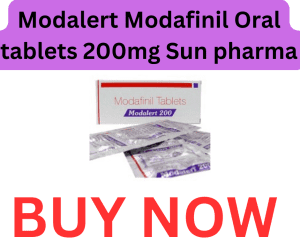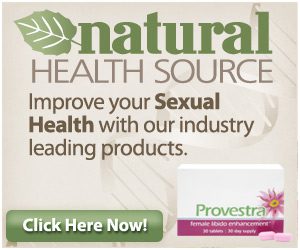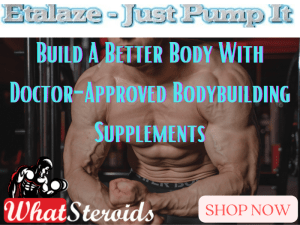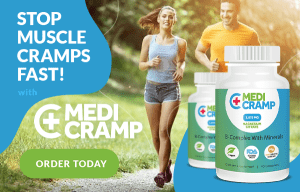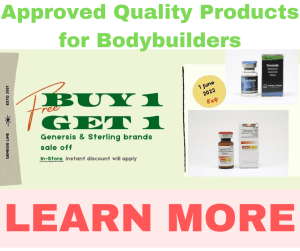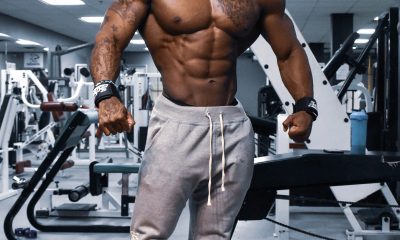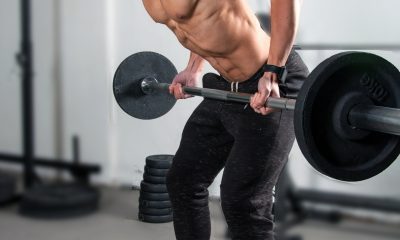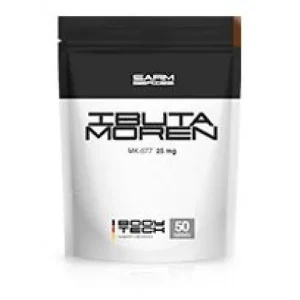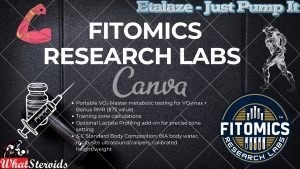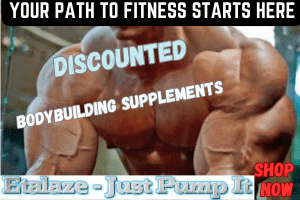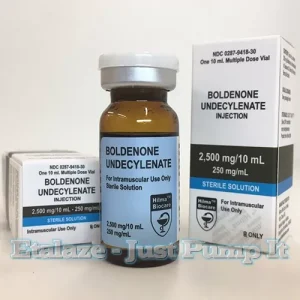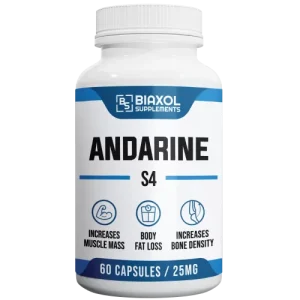Steroids
Why Use Antioxidants During a Steroid Cycle.

Antioxidants During a Steroid Cycle
Steroids are synthetic hormones designed for clinical use in managing various chronic diseases. Anabolic-androgenic steroids, derivatives of the male hormone testosterone, are used by athletes in sports. The aim in such instances is to boost muscle mass and increase performance and endurance. Also, they shorten recovery time between exercises. Inappropriate use of steroids is associated with several adverse effects. Their correct use is recommended to limit such outcomes, and antioxidants can help you.
Due to the varied uses and different desired outcomes, patterns of use have been established; cycling, stacking, and pyramiding. The steroid cycle refers to a pattern of steroid use intending to build body or muscle mass. Here, anabolic androgenic steroids are used in six to twelve weeks, followed by an off phase of several months. Pyramiding generally involves gradually increasing the dose of the steroids to a maximum level, followed by dose reduction. Another pattern is stacking, where various steroid combinations include other supplements.
Steroids in Sports
Athletes' desired outcomes categorize steroids as either bulking steroids- used to increase muscle mass or performance steroids- aimed to increase strength and endurance. Or cutting steroids- used to reduce weight (cut fat). Delivery routes are based on user preference and desired outcome. It can be oral, implants, injections, and creams or gels. They bind to the androgen receptors in the body, resulting in molecular interactions with the cell DNA. The ultimate result is to increase protein synthesis and subsequent cell growth.
Related Article:: How Can Steroids Affect Athletes – Benefits and Side Effects of Steroids
Cycles for anabolic steroid use depend on the physical state of the user. Beginners and experienced users have different cycles. This limits the chances of developing adverse outcomes; for instance, it lowers the risk of suppressing one's hormone production. Also, it enhances higher efficiency and safety. An example of a steroid cycle for beginners includes turinabol 30-50mg/day for 9 weeks, testosterone enanthate 500mg/week for 8 weeks, and Dianabol 30-50mg/day for 6 weeks. Experienced athletes' cycle contains a combination of steroids, for example, nandrolone decanoate +sustanon, trenbolone enanthate plus testosterone, and boldenone plus testosterone enanthate.
Related Article:: 10 Steroid Cycles for Different Goals (Newbie, Bulking, Cutting, Strength)
What are Antioxidants?
Antioxidants are substances or elements that inhibit or reduce cell damage due to free radicals, reactive oxygen species, and other unstable molecules resulting from chemical reactions or physiological changes in the body. During a steroid cycle, antioxidants play a role in scavenging free radicals and other unstable compounds produced by skeletal muscles during exercise.
- The roles played by these antioxidants include;
- Prevent oxidative stress.
- Reduce exercise-induced muscle damage.
- Increase muscle endurance.
- Shorten the recovery time after exercise.
- Counteract neutrophil inflammatory response.
The roles listed above are discussed in detail as follows. Later, I will discuss various classes and types of antioxidants available.
Antioxidants Counteract the Effect of Oxidative Stress.
Antioxidants cushion the oxidative stress sequelae. Physical exercise increases the production of reactive oxygen species, nitrogen species, and free radicals and their accumulation within the muscle mass. A sustained balance between oxidation and reduction is important in maintaining muscle physiology. These reactive oxygen species comprise superoxide anions, hydroxyl radicals, and peroxyl radicals.
>> Super ANTIOXIDANTS <<
Oxidative stress results from an imbalance between free radical production and the eliminating of physiological antioxidants. This imbalance with increased radical levels accounts for oxidative damage. Stress-sensitive signal pathways are activated, which play a role in the pathogenesis of chronic conditions such as cardiovascular conditions, metabolic syndrome, and insulin resistance.
Physical exercise's physiological importance in maintaining normal body function and health is accompanied by oxidative stress induction. During physical exercise, there is an increased demand for oxygen in the muscle tissue. It is estimated that oxygen uptake by the muscles increases by 10-20 folds. This increased influx in active skeletal muscles increases the formation of reactive oxygen species and free radicals. Their effect is to oxidize macromolecules, DNA, amino acids, polyunsaturated fatty acids, and proteins.
Basis of Antioxidants
The oxidized molecules form the basis for the development of chronic diseases. Reactive oxygen species accumulation results in muscle dysfunction and damage, prolonging recovery time. Antioxidants must counter these effects by eliminating formed reactive oxygen species and free radicals.
>> NOW Super ANTIOXIDANTS <<
Increased muscular activity is accompanied by increased metabolic rate and increased oxygen consumption by muscle fibers. This results in a subsequent temperature increase and reduced cellular muscle mass pH. These changes enhance free radicals' formation and accumulation in the muscle cells. Antioxidants protect the body from oxidative damage by reactive oxygen species and free radicals. Antioxidants protect against muscle damage.
During the steroid cycle, muscular activity increases with increased exercise levels. During this activity, muscle fibers stretch as a result of repeated use. Repeated contractions and relaxation create tension in skeletal muscles, causing the fibers to lengthen. Physical exercise increases oxygen influx within the muscle tissue. These active muscle fibers increase in size approximately by 100-200 folds. Normally, muscle fibers are adaptive to the level of stress experienced.
However, increased activity increases the production and accumulation of free radicals and reactive oxygen species. Their formation rate exceeds that of clearance by available antioxidants, both exogenous and endogenous systems. Their formation plays a role in muscle damage during physical activity. Antioxidants remove the reactive oxygen species, thus halting further muscle damage. A study by Cian McGinley et al. 2009 evaluated vitamin C and E's role in preventing muscle damage due to ROS due to exercise among sportspersons.
New studies on Antioxidants
The study used various supplementation mechanisms with variations in dosing, timing, and duration. The study's outcome showed that antioxidants reduce oxidative stress with a minimal role in preventing muscle damage. A similar study by Vilma Simoes Pereira et al. in 2015 aimed to find the effects of supplementation with dietary antioxidants on recovery following exercise-related muscle damage.
>> Solgar Antioxidant Formula <<
Dietary supplementation of phytochemicals has been shown to reduce the effects of eccentric muscle damage due to exercise. Another study explained the findings above, emphasizing that the correct dosage and requirement should be provided to avoid toxicity or causing further muscle damage. An individual estimated requirement must be provided for muscle tissue's effective functioning and a better outcome.
Role in Modulating Inflammatory Response.
During the steroid cycle, individuals are involved in strenuous physical exercise. This activity alters the skeletal muscle state by increasing the length and that of tendons. This is a result of the adaptive activity of the muscle tissue to exercise, as discussed above. In the process, there is a muscle injury, which will trigger an inflammatory response. Muscle damage also results from the thermal effects and ischemia/reperfusion. Neutrophil leads to the accumulation of reactive oxygen species, thus increasing the burden of oxidative stress in the muscle cells.
Neutrophils are increased in circulation during exercise. Their increase subsequently increases the level of neutrophils associated with reactive oxygen species and corresponding oxidative stress. Another source of neutrophils during exercise is suggested to be the effect of free radicals on leucocytes, where they damage the DNA. A study confirmed that antioxidants modulate the neutrophil inflammatory response to exercise-induced stress.
>> Pure Antioxidant Formula <<
In that study dated December 7th, 2020, three groups were studied for 21 days. One group was on the antioxidant-supplemented beverage, and the others acted as control groups. Blood samples were drawn at the end of the exercise, and plasma and neutrophils were separated. Plasma creatinine kinase and myoglobin levels have elevated a confirmation of muscle damage due to exercise.
After measuring plasma oxidative bio-markers, it was found that it increased in all the groups, not on antioxidant supplements. On measuring neutrophil antioxidant enzymes, there was a notable increase in the control groups, confirming that the activity was reduced in the supplemented group. The activity of myeloperoxidases was increased significantly among the control groups. On the other hand, enzyme levels were elevated among those on antioxidant supplements. This confirmed the role of antioxidants in modulating inflammatory responses induced by exercise.
Increase muscle endurance and recovery and reduce recovery time.
Selected antioxidants have been shown to increase muscle endurance by reducing the delayed onset of muscle soreness. Polyphenols and other commercial antioxidants have been shown to have a moderate to good effect in lowering the delayed onset of muscle soreness. Other antioxidants have been shown to affect post-exercise muscle recovery positively. The ROS-scavenging effect of antioxidants reduces the number of free radicals and reactive oxygen species in skeletal muscles during exercise. These changes reduce muscle damage and thus increase muscle endurance during exercise. The formation of free radicals within the skeletal muscle has beneficial effects—the produced reactive oxygen species act as signaling pathways to enhance muscle protection from further physical stress.
Antioxidants
As defined above, they are free radical scavenging molecules. The overall effect of this function in to protect the cells from oxidative stress-induced damage. Their interaction with free radicals results in a chemical reaction that stabilizes these free radicals. In other words, the molecules can prevent oxidation or limit oxidation of other molecules. Oxidation refers to a chemical reaction that involves the transfer of electrons from one compound or element to the other (oxidizing agent).
>> Bluebonnet Antioxidant Formula <<
These reactions act as a source of free radicals, which start a chain of other harmful reactions to the cells. Antioxidants are mostly reducing agents in nature, thus preventing oxidation reactions by them getting oxidized in the process. A lack of antioxidants in the body or their limited availability will result in an oxidative stress state. This state is associated with a series of reactions that damage the cells and compromise function. Free radicals are associated with the pathogenesis of chronic diseases, for instance, cardiovascular diseases and cancers. Supplementation of antioxidants is beneficial because it provides the body's optimal physiological function and improves health.
Antioxidants can be endogenous or exogenous. Physiological antioxidants are naturally present in the body and comprise superoxide dismutase, catalase, and glutathione peroxidase. Exogenous antioxidants must be provided through an antioxidant-rich diet, synthetic antioxidants, and other supplements. Examples include thiols, vitamins C, E, and A, and polyphenols. Antioxidants can also be grouped as: 1. Natural antioxidants (primary), and 2. Synthetic antioxidants (secondary).
Primary antioxidants (free radical scavengers)
These antioxidants stabilize free radicals. They achieve this by breaking the chains of lipid radicals and converting them to a non-radical state or stable form. This group comprises antioxidants derived from phenols and secondary aromatic amines. Their structure makes them available in different molecular weights. They are further grouped as either mineral antioxidants, vitamin antioxidants, or phytochemicals. The mineral antioxidant serves as co-factors to enzymes involved in the anti-oxidation process. They comprise selenium, iron, zinc, magnesium, and copper.
>> Sambucus Advanced Formula <<
Their availability plays a bigger role in macromolecules' metabolisms, such as proteins and carbohydrates. Vitamins and antioxidants are vitamins that act as reducing agents. This comprises vitamins B, C, and E. Antioxidants that cannot be grouped as minerals or vitamins fall in the phytochemical category, including flavonoids. They are phenol compounds responsible for the coloration of plants, i.e., fruits and vegetables or seed leaves.
The most active in this group are catechins found in green tea and sesamol. The fat-soluble color of vegetables and fruits forms carotenoids. An example is beta-carotene, which is found in carrots in the body. It serves as a source of vitamin A in case of deficiency. Tomatoes have lycopene as an antioxidant, while dark green vegetables have zeaxanthin.
Secondary Antioxidants (peroxidase scavengers)
Unlike primary antioxidants, these function by reducing or decompressing hydroperoxides into stable compounds before transforming into active free radicals and stopping the chain reaction. The action can be combined with primary antioxidants for synergism and effective oxidative stress management. Examples include; Nordihydro garlic acid, tertiary butyl hydroquinone, butylated hydroxytoluene, propyl gallate, metal chelating agents, and butylated hydroxyanisole.
Sources of antioxidants.
The leading source of antioxidants is fruits and vegetables. Antioxidants are also available in nuts, grains, and animal proteins. Alpha-tocopherol is found in sunflowers, almonds, corn, broccoli nuts, and mangoes. Vitamin A-rich foods include liver, sweet potato, carrot, milk, egg yolk, and cheese. Ascorbic acid is found in most fruits and vegetables.
>> NOW E-400 <<
Color-containing fruits and vegetables, especially oranges color, are rich in beta-carotene. Green vegetables have an abundance of lutein and zeaxanthin. Tomatoes and their products contain high levels of lycopene. Mineral antioxidants are provided as supplements or other available in plants and animals, for example, selenium (rice and wheat).
Properties of antioxidants
Antioxidants used mostly are phenol compounds, either monohydroxyl or polyhydroxy. Due to their low activation energy, they are not reduced (they would not donate hydrogen). As a result of this stabilization, it prevents the formation of other free radicals. A free radical chain reaction is minimized by donating hydrogen by the antioxidant. The intermediate antioxidant free radical does not oxidize due to its stability, thus preventing free radical chain reaction propagation. The resultant antioxidant radical can also react with lipid-free radicals, and a complex compound is formed, which is stable, thus preventing further damage by such radicals.
Examples of antioxidants
Vitamin E (tocopherol): this is a fat-soluble antioxidant. Among the eight members of this group, alpha-tocopherol is the most important. It is the most lipid-soluble and enhances the membranes' protection from lipid-related free radicals resulting from lipid peroxidation chain reaction. The intermediate of this reaction, oxidized alpha-tocopherol, can be recycled to its original form using other antioxidants, e.g., vitamins A and C.
>> Gamma E Complex <<
Vitamin C has reducing properties, can neutralize reactive oxygen species, and plays a vital role in cancer prevention. Its reaction with glutathione within the cell maintains it in a reduced state.
Glutathione is synthesized in the cells from amino acids. It can be maintained within the cell in either reduced or oxidized states mediated by enzymes such as glutathione reductases. It maintains the cell in its redox state, and due to its high concentration, it is the most vital cellular antioxidant. The cysteine group has reduction properties in its structure and can be oxidized reversibly.
Adverse effects of antioxidants
- Toxicity in case of antioxidant overdose.
- Reactive oxygen species (ROS) regulate cell adhesion, and their elimination compromises this.
- ROS regulates the MAPK pathway for DNA repair. antioxidants actions will inhibit DNA repair and apoptosis
- Immune system activation depends on ROS, and so does inflammatory response induction.
- ROS plays a role in killing phagocytosed microbes by macrophages. Their elimination by antioxidants will impair this role.
- Activation of the extracellular microbes depends on superoxide and nitric oxide, which eliminate antioxidants.
Conclusion
Contrary to what many people think about antioxidants, they’re, in fact, beneficial to a bodybuilder or any other fitness enthusiast during a steroid cycle. However, it would help if you regulated it to reap the full benefits.
Bodybuilding
Is Training/Lifting Barefoot A Good Idea? Find Out

For decades, the gym floor has echoed with the thud of cushioned sneakers, lifting shoes, and high‑tech trainers promising better stability, more power, and improved performance. Yet in recent years, a surprising shift has taken hold among serious lifters: many are kicking off their footwear entirely. What began as a fringe practice—often dismissed as quirky or unsafe—has evolved into a growing movement embraced by bodybuilders, powerlifters, and functional fitness athletes who swear that training barefoot unlocks a deeper, more natural kind of strength.
At first glance, the idea seems almost counterintuitive. After all, modern athletic shoes are engineered with layers of support, padding, and structure. But that’s exactly the point. As lifters push for better technique, stronger lifts, and more efficient movement patterns, many are realizing that all that cushioning may be doing more harm than good. By removing the barrier between foot and floor, barefoot training forces the body to engage stabilizing muscles that shoes often mute. The result? A stronger foundation, improved balance, and a more connected kinetic chain from the ground up.
Beyond performance, the barefoot trend taps into a broader shift toward natural movement and functional strength. Lifters are rediscovering the importance of foot mechanics—how the toes grip, how the arches support, and how the ankles align. These subtle details influence everything from squat depth to deadlift power. And as more athletes experiment with barefoot sessions, they’re finding that the benefits extend far beyond the feet themselves.
Of course, going shoeless in the gym isn’t just about following a trend. It’s about rethinking how we build strength, questioning long‑held assumptions, and exploring what happens when we strip training back to its most primal form. Serious lifters aren’t throwing away their shoes for style—they’re doing it for results.
Click Here to Buy Ibutamoren 50 Tabs by BodyTech
Advantages of Training Barefoot for Pro Bodybuilders
For professional bodybuilders, every detail matters—how the body moves, how muscles fire, and how efficiently force transfers through the kinetic chain. Training barefoot has emerged as a surprisingly effective way to refine these details and unlock performance benefits that shoes often mask.
One of the biggest advantages is enhanced stability. Without the interference of thick soles or elevated heels, the feet can spread naturally, creating a wider, more grounded base. This stability is crucial during heavy compound lifts like squats, deadlifts, and lunges, where even minor wobbling can compromise form or reduce power output. Barefoot training allows bodybuilders to feel the floor directly, improving balance and control under load.
Another major benefit is greater activation of stabilizing muscles, especially in the feet, ankles, and lower legs. Modern footwear often restricts natural movement, causing these smaller muscles to weaken over time. Training barefoot forces them to engage, strengthening the foundation that supports every lift. For bodybuilders, this translates to better joint integrity, improved symmetry, and reduced risk of chronic overuse injuries.
Barefoot lifting also enhances proprioception—the body’s ability to sense position and movement. With more sensory feedback from the ground, athletes can fine‑tune their technique, adjust their stance, and maintain optimal alignment throughout each rep. This heightened awareness can improve squat depth, deadlift mechanics, and overall lifting efficiency.
Must Read: The Proper Approach to Buying Steroids Online (updated)
Additionally, training without shoes encourages more natural biomechanics. The feet move freely, the arches function as intended, and the ankles maintain a neutral position. This can help correct imbalances caused by years of training in restrictive footwear, ultimately supporting better long‑term performance.
For pro bodybuilders chasing marginal gains, barefoot training offers a simple yet powerful way to build strength from the ground up—literally. It’s not just a trend; it’s a strategic tool for maximizing muscle engagement, improving technique, and enhancing overall athletic longevity.
Possible Downsides of Lifting Barefoot
While barefoot training has gained popularity among casual lifters for its “natural” feel and improved ground contact, the situation is very different for professional bodybuilders. At elite levels, athletes handle extreme loads that demand maximum stability, protection, and performance efficiency. Without proper footwear, the risks multiply — from injuries and reduced leverage to hygiene concerns and long-term joint stress. The following points highlight why barefoot lifting can be problematic for pro bodybuilders.
1. Reduced Foot Protection
Bare feet leave you vulnerable to dropped weights, sharp objects, or heavy equipment. For pro bodybuilders handling massive loads, this risk is amplified.
2. Higher Risk of Injury
Without shoes, the bones, tendons, and ligaments in your feet absorb more stress. Heavy squats or deadlifts can easily cause sprains or fractures.
3. Lack of Arch Support
Shoes provide structural support that helps prevent issues like flat feet or plantar fasciitis. Barefoot lifting removes that safeguard.
4. Instability Under Heavy Loads
Gym floors can be slippery or uneven. Shoes add grip and stability, while barefoot training increases the chance of wobbling or losing balance.
Related Article: Muscle Density Decoded: Why Hardness Beats Size
5. Reduced Performance in Certain Lifts
Olympic lifts and squats often benefit from raised heels or firm soles. Barefoot training limits leverage and can reduce maximum output.
6. Increased Stress on Ankles and Knees
Without cushioning, impact forces travel directly into the joints. Over time, this can contribute to chronic pain or injury.
7. Hygiene Concerns
Gyms are breeding grounds for bacteria and fungi. Training barefoot raises the risk of infections like athlete’s foot.
8. Limited Leg Drive in Deadlifts
While barefoot deadlifting improves ground contact, it reduces leverage compared to specialized lifting shoes designed for maximum force transfer.
9. Not Competition-Ready
Most bodybuilding and powerlifting competitions require footwear. Barefoot training doesn’t translate well to actual performance standards.
10. Potential Long-Term Damage
Repeated barefoot lifting under heavy loads can cause chronic foot problems, misalignment, and reduced career longevity.
Overall
As we mentioned earlier, training barefoot has become a trend among some athletes, but for professional bodybuilders the practice carries both potential benefits and serious drawbacks. On the positive side, lifting without shoes can improve proprioception — the body’s awareness of movement and position — which may enhance balance and stability during certain exercises. Barefoot training also strengthens the small muscles of the feet and ankles, potentially reducing reliance on supportive footwear. For lifts like deadlifts, direct contact with the floor can improve force transfer and reduce unnecessary elevation caused by cushioned soles.
However, the disadvantages are far more significant at elite levels. Bare feet lack protection against dropped weights or sharp equipment, exposing bodybuilders to severe injury risks. Without arch support or cushioning, stress is shifted to the ankles, knees, and hips, increasing the likelihood of chronic pain or joint damage. Performance in squats and Olympic lifts often suffers, since specialized shoes provide leverage and stability that barefoot training cannot replicate. Hygiene is another concern, as gym floors harbor bacteria and fungi. Finally, barefoot lifting does not align with competition standards, where footwear is mandatory.
In short, while barefoot training offers some functional benefits, professional bodybuilders face greater risks that outweigh its advantages.
Anabolic Steroids
Using Insulin Needles to Inject AAS: Pros and Cons
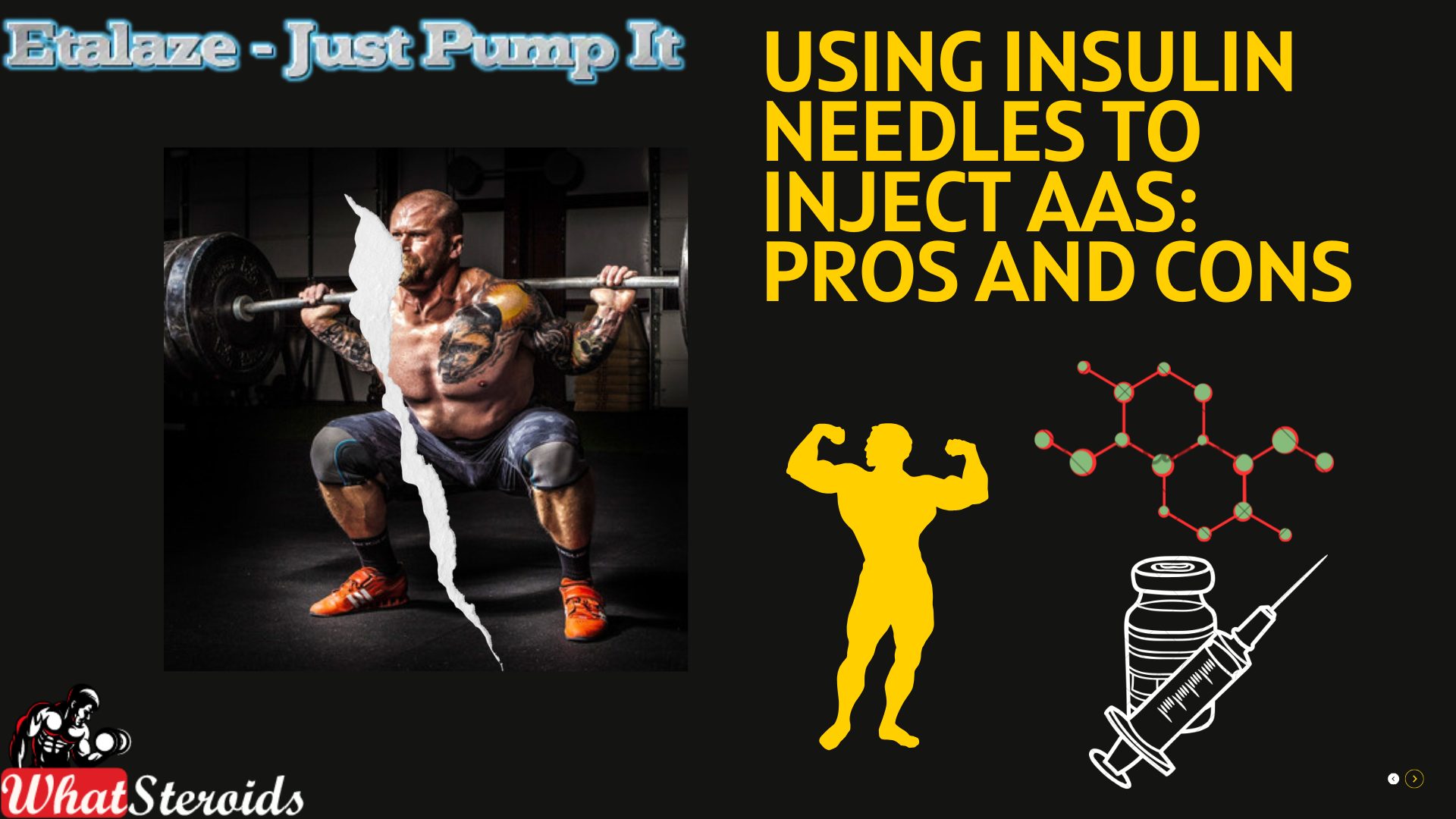
Bodybuilding has long been associated with the pursuit of physical excellence, where athletes and enthusiasts dedicate themselves to sculpting muscular physiques. You need rigorous training, disciplined nutrition, and, in some cases, the use of performance-enhancing substances. Among these substances, anabolic-androgenic steroids (AAS) occupy a controversial space. While medically prescribed for specific conditions, AAS are often used to accelerate muscle growth, improve recovery, and enhance overall performance. Their use, however, is fraught with ethical, legal, and health-related concerns.
One practical issue that arises in this context is the method of administration. AAS are typically injected intramuscularly, requiring needles that can deliver oil-based solutions deep into muscle tissue. Yet, some individuals turn to insulin needles—originally designed for subcutaneous delivery of insulin—as an alternative. This choice is often motivated by the perception that insulin needles are less intimidating, less painful, and more discreet. For bodybuilders who may be inexperienced with injections, the appeal of a smaller, finer needle can be strong.
Click Here to Buy Boldenone Undecylenate 250 mg/ml by Hilma Biocare
However, the suitability of insulin needles for AAS administration is highly debated. While they may offer certain conveniences, their limitations in terms of depth, absorption, and compatibility with thicker solutions raise significant concerns. Misuse can lead to complications ranging from ineffective dosing to infections and tissue damage.
Must Read: Running and Bodybuilding: Is it a Good Idea to Mix Them?
In bodybuilding culture, where experimentation and peer influence often shape practices, understanding the pros and cons of using insulin needles for AAS injections is essential. By examining both benefits and the potential risks, we can better appreciate the complexities of AAS injection and emphasize the importance of informed, responsible decision-making.
Why Insulin Needles
Insulin needles are generally preferred for many types of injections because they are shorter, thinner, less painful, and reduce the risk of complications compared to larger needles
Patient comfort: Insulin needles are designed to minimize pain. Their fine gauge and short length make injections less intimidating and more tolerable, especially for people who need frequent injections.
Reduced risk of complications: Shorter needles lower the chance of hitting muscle or nerves when delivering medication subcutaneously. This reduces risks like bruising, bleeding, or accidental intramuscular injection
Effective delivery: For insulin and other subcutaneous medications, shorter needles are just as effective as longer ones. They ensure the drug reaches the correct tissue layer without unnecessary depth.
Ease of use: Their design makes them simple to handle, even for patients self-administering injections daily. This accessibility encourages adherence to treatment
Compatibility with subcutaneous injections: Many medications besides insulin—such as certain vaccines, hormones, and biologics—are delivered under the skin. Insulin needles are well-suited for these because they match the required depth and absorption rate.
Insulin Needles vs. Intramuscular Needles in Bodybuilding
When it comes to injecting anabolic-androgenic steroids (AAS), bodybuilders often weigh the choice between insulin needles and traditional intramuscular needles. Insulin needles are very fine and short, usually ranging from 29 to 31 gauge and only a few millimeters in length. This makes them far less intimidating and significantly less painful to use. For athletes who inject frequently, the reduced discomfort and minimal scarring are appealing, especially since visible bruising or scar tissue can detract from the aesthetic goals of bodybuilding. Their wide availability in pharmacies and association with legitimate medical use also adds to their convenience and discretion.
However, insulin needles are designed for subcutaneous injections, meaning they deposit medication just under the skin. AAS, on the other hand, are typically oil-based compounds that require intramuscular delivery for proper absorption. The fine bore of insulin needles makes drawing and injecting these thicker solutions difficult, and their short length often fails to reach muscle tissue. This mismatch can lead to poor absorption, underdosing, or even localized complications such as abscesses and tissue irritation.
Intramuscular needles, by contrast, are longer and thicker—usually 21 to 25 gauge and 25 to 40 millimeters in length. While they cause more pain and can be intimidating for beginners, they are specifically designed to deliver oil-based substances deep into muscle tissue. This ensures that AAS are absorbed effectively and reduces the risk of complications when used correctly. Over time, repeated intramuscular injections may cause bruising or scar tissue, but medically they remain the appropriate tool for this type of administration.
In short, you may prefer insulin needles for their comfort, accessibility, and cosmetic advantages, but intramuscular needles remain the medically suitable option for AAS injections. The perceived safety of insulin needles does not outweigh the risks of improper delivery, making the choice more about convenience than effectiveness.
Downsides of Using Insulin Needles for AAS in Bodybuilding
For bodybuilders, the downsides of insulin needles in AAS use are significant: poor absorption, infection risk, tissue damage, and wasted product. While they may reduce pain and appear more convenient, they compromise both safety and effectiveness. In bodybuilding culture, where results are paramount, these drawbacks make insulin needles a risky and counterproductive choice.
Improper absorption
Insulin needles are designed for subcutaneous injections, but AAS typically require intramuscular delivery. Injecting into fat or shallow tissue can lead to poor absorption, reduced effectiveness, and unpredictable results.
Also See: Fitness Lessons from A Navy Seal’s Training Routine
Viscosity mismatch
AAS solutions are often oil-based and much thicker than insulin. Fine-gauge insulin needles struggle to draw and push these solutions, leading to blocked syringes, incomplete injections, or excessive force that damages tissue.
Risk of infection and abscesses
Because oil may pool in subcutaneous tissue instead of dispersing into muscle, it can irritate the area and create a breeding ground for bacteria. This raises the risk of painful abscesses that may require medical intervention.
Underdosing and wasted product
If the steroid doesn’t reach the muscle, the bodybuilder may not achieve the intended anabolic effect. This not only wastes expensive compounds but also tempts users to increase frequency or dosage, compounding health risks.
Tissue damage
Repeated shallow injections can cause lumps, irritation, or necrosis in fatty tissue. For bodybuilders focused on aesthetics, visible damage under the skin undermines their goals.
False sense of safety
Many athletes assume insulin needles are “safer” because they are smaller and widely used in diabetes care. In reality, this perception can mask the fact that they are medically inappropriate for AAS, leading to dangerous practices.
Related Article: Best Syringes for Steroid Injection on Amazon
Overall
Bodybuilders and athletes often face difficult choices when it comes to performance enhancement, and the method of administering anabolic-androgenic steroids (AAS) is one of them. Insulin needles, with their fine gauge and short length, are attractive because they reduce pain, minimize scarring, and are easy to obtain. For individuals who inject frequently, these qualities can seem like practical advantages.
However, the reality is that insulin needles are not designed for oil-based compounds that require intramuscular delivery. Their short length and narrow bore make them unsuitable for reaching muscle tissue, leading to poor absorption, underdosing, and potential tissue irritation. The risk of infection or abscess formation is also heightened when AAS are deposited into fatty tissue rather than muscle. What may appear to be a safer, more comfortable option can ultimately compromise both health and performance outcomes.
Athletes who prioritize long-term progress must recognize that convenience should never outweigh safety. While insulin needles may seem appealing, they are not always appropriate for AAS administration. The discipline that defines bodybuilding and athletic success should extend to responsible decision-making, ensuring that choices made in pursuit of strength and aesthetics do not undermine overall well-being.
Anabolic Steroids
Is NAD+ The Best Anti-aging Molecule for Men Over 40?
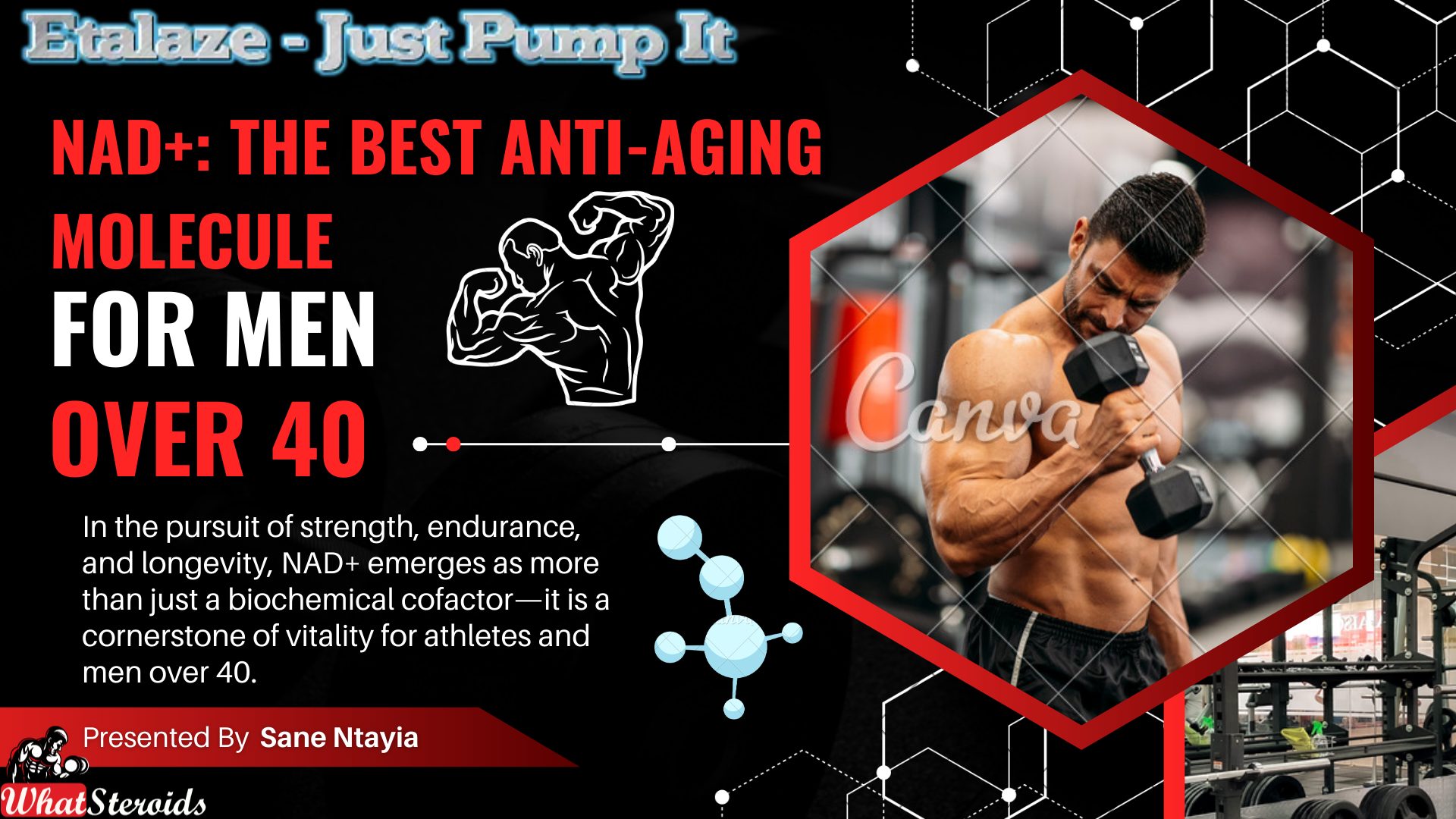
NAD+(Nicotinamide Adenine Dinucleotide) has become the quiet obsession of athletes and bodybuilders who care as much about longevity as they do about performance. For men over 40, the game changes: recovery slows, energy dips, and the margin for error—sleep, nutrition, stress—gets razor-thin. That’s where NAD+ steps in. As a central coenzyme in cellular metabolism, NAD+ powers the mitochondria that generate ATP, supports DNA repair, and helps regulate inflammation and oxidative stress—the exact pressures that compound with age and intense training. The catch? NAD+ levels decline as we get older, and that drop doesn’t just feel like “getting tired”; it shows up as reduced work capacity, stubborn recovery, and a harder fight to preserve lean mass.
For the seasoned lifter, anti-aging isn’t about turning back the clock—it’s about staying dangerous: maintaining strength, clarity, and resilience year after year. By supporting NAD+—through smart training, lifestyle, and targeted precursors like NR or NMN—you’re not chasing a miracle; you’re reinforcing the cellular systems that keep you strong. Think steadier energy across sets, cleaner recovery between sessions, and a more robust response to stressors that typically erode performance after 40.
This article explores how NAD+ intersects with muscle metabolism, hormonal signaling, and recovery pathways, and what practical steps can help you sustain the physique and output you’ve built. If you’re a man over 40 who refuses to age passively, NAD+ isn’t hype—it’s a lever worth understanding and pulling with intention.
Must Read: How to Manage Joint Stiffness While on AAS
Why NAD+ Levels Drop in Men Over 40
NAD+ levels decline with age because the body’s ability to produce and preserve this vital coenzyme weakens, while demand for it increases.
Reduced biosynthesis: The enzymes and pathways that create NAD+ from precursors like niacin and tryptophan become less efficient over time.
Increased consumption: NAD+ is used by repair enzymes such as PARPs (for DNA repair) and sirtuins (for regulating metabolism and aging). As DNA damage and oxidative stress accumulate with age, these enzymes consume more NAD+, depleting reserves.
Greater degradation: Another enzyme, CD38, becomes more active with age. CD38 breaks down NAD+, and its rising activity is strongly linked to age-related decline in NAD+.
Mitochondrial dysfunction: Aging cells often suffer from less efficient mitochondria. Since NAD+ is central to mitochondrial energy production, dysfunction accelerates its depletion.
Lifestyle and stress factors: Poor sleep, chronic stress, alcohol, and high-intensity training without proper recovery can further drain NAD+ levels, especially in men over 40
Why This Matters for Men Over 40
- Lower NAD+ means slower recovery, reduced energy output, and greater susceptibility to inflammation.
- Declining NAD+ is linked to fatigue, cognitive decline, and accelerated aging.
For athletes and bodybuilders, this translates into harder muscle maintenance, longer recovery windows, and plateaus in performance.
Remedies to Boost NDA+ Levels in Men Over 40
Men and athletes over 40 can boost NAD+ levels through a mix of lifestyle strategies (exercise, fasting, sleep), dietary choices (niacin-rich foods), and supplementation (NR, NMN, NAD+ IV therapy).
Lifestyle Approaches
Regular exercise: Endurance and resistance training stimulate mitochondrial function and naturally increase NAD+.
Intermittent fasting: Periods of caloric restriction activate sirtuins, which depend on NAD+.
Quality sleep: Restorative sleep reduces oxidative stress and preserves NAD+ reserves.
Stress management: Chronic stress elevates NAD+ consumption; mindfulness and recovery practices help conserve it.
Avoid excess alcohol: Alcohol metabolism depletes NAD+, so moderation is key.
Related Article: Healing Peptides in Focus: BPC-157 vs TB-500 for Injury Recovery
Dietary Strategies
Niacin-rich foods: Chicken, tuna, salmon, turkey, and mushrooms provide vitamin B3, a precursor to NAD+.
Tryptophan sources: Eggs, dairy, and nuts support NAD+ synthesis via the kynurenine pathway.
Polyphenols: Resveratrol (found in grapes and red wine) activates sirtuins, indirectly supporting NAD+.
Ketogenic diet: Promotes fat metabolism and enhances NAD+/NADH ratio.
Click Here to Buy Andarine S4 By Biaxol
Supplementation
Nicotinamide Riboside (NR): A direct precursor shown to raise NAD+ levels in humans.
Nicotinamide Mononucleotide (NMN): Another precursor with strong evidence for boosting NAD+ and supporting anti-aging pathways.
NAD+ IV therapy: Direct infusion used by some athletes for rapid replenishment.
Co-factors like magnesium and B vitamins: Support enzymatic reactions that sustain NAD+ metabolism.
Advanced/Medical Options
CD38 inhibitors: Experimental compounds that reduce NAD+ breakdown.
PARP inhibitors: Limit excessive NAD+ consumption during DNA repair (still under research).
Hormonal optimization: Testosterone and growth hormone balance indirectly support NAD+ pathways in men over 40.
The Catch:
Energy & endurance: Higher NAD+ means more efficient ATP production.
Recovery & repair: Supports DNA repair and reduces inflammation after training.
Anti-aging resilience: Helps maintain muscle mass, cognitive clarity, and metabolic health.
NAD+ Delivery Methods
1. Intravenous (IV) NAD+ Therapy
- Direct infusion of NAD+ into the bloodstream.
- Used in clinics for rapid replenishment of cellular NAD+.
- Often promoted for anti-aging, recovery, and cognitive clarity.
- Sessions can last several hours, as NAD+ must be infused slowly to avoid side effects (like nausea or flushing).
Dosing: Typically ranges from 250 mg to 1000 mg per session, but exact protocols vary by clinic and medical supervision.
2. Intramuscular or Subcutaneous Injections
- Less common than IV, but some practitioners use NAD+ injections for quicker delivery than oral supplements.
- Provides a shorter, more concentrated boost compared to IV drip.
- Still requires medical oversight, as NAD+ injections can be uncomfortable and must be dosed carefully.
Oral Supplementation
1. NAD+ Precursors (NMN & NR)
- Nicotinamide Mononucleotide (NMN) and Nicotinamide Riboside (NR) are widely available as capsules or powders.
- These compounds are converted into NAD+ inside cells.
- Easier, safer, and more practical for long-term use compared to IV therapy.
Dosing: Common ranges are 250–500 mg daily, though some studies explore higher doses.
Check Out: Piracetol Review Benefits and Side Effect
2. NAD+ Capsules
- Direct oral NAD+ supplements exist, but absorption is less efficient than precursors.
- Most experts recommend NMN or NR instead, as they are better studied and more bioavailable.
Overall
In the pursuit of strength, endurance, and longevity, NAD+ emerges as more than just a biochemical cofactor—it is a cornerstone of vitality for athletes and men over 40. As natural levels decline with age, the consequences ripple through energy, recovery, and resilience. By embracing lifestyle strategies, nutrient-rich diets, and modern supplementation, bodybuilders can sustain performance while slowing the clock on cellular aging. Whether through daily NMN or NR, or targeted therapies under medical guidance, supporting NAD+ is an investment in both present power and future health—a path to staying strong, sharp, and ageless in the decades ahead.
-

 Bodybuilding Products2 years ago
Bodybuilding Products2 years agoTelmisartan In Bodybuilding: An Expert’s Advice
-
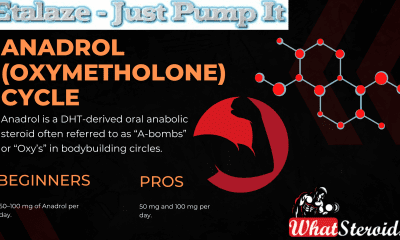
 Steroids2 years ago
Steroids2 years agoAnadrol Cycle: Benefits, Doses, Alternatives, etc.
-
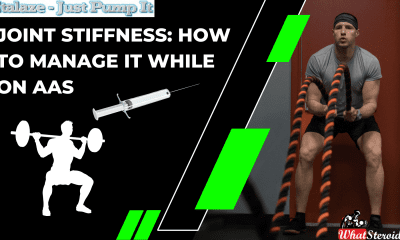
 Anabolic Steroids1 year ago
Anabolic Steroids1 year agoJoint Stiffness: How to Manage It While on AAS
-
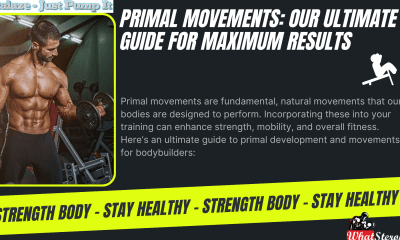
 Bodybuilding1 year ago
Bodybuilding1 year agoPrimal Movements: Our Ultimate Guide for Maximum Results
-
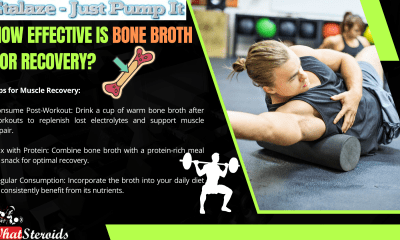
 Bodybuilding1 year ago
Bodybuilding1 year agoHow Effective is Bone Broth for Recovery?
-

 Steroids1 year ago
Steroids1 year agoBodybuilder Winter Clothing: Staying Warm and Stylish
-
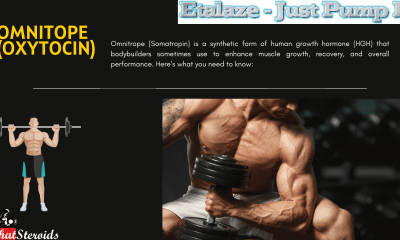
 Steroids1 year ago
Steroids1 year agoOmnitope (Oxytocin)
-
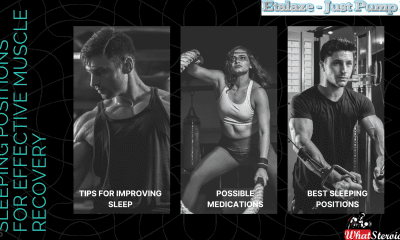
 Steroids1 year ago
Steroids1 year agoSleeping Positions for Effective Muscle Recovery
-

 Bodybuilding2 years ago
Bodybuilding2 years agoHow Much Is Too Much Cardio? Understanding Heart Rate Zones
-
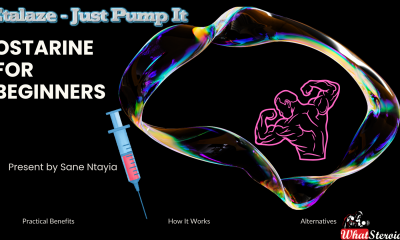
 Steroids12 months ago
Steroids12 months agoOstarine For Beginners: The Ultimate Guide
-
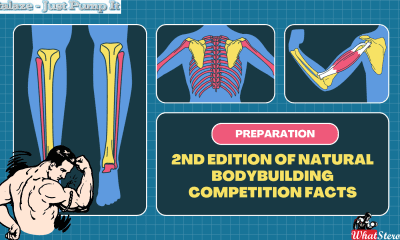
 Bodybuilding1 year ago
Bodybuilding1 year ago2nd Edition of Natural Bodybuilding Competition Facts
-
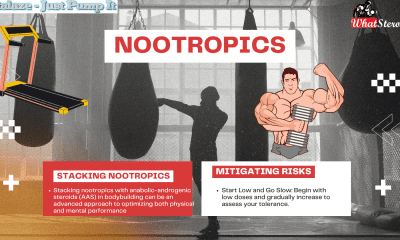
 Bodybuilding1 year ago
Bodybuilding1 year agoAre Nootropics a Better Option to AAS?
-

 Bodybuilding1 year ago
Bodybuilding1 year agoTop Video Games for Bodybuilders in 2025
-
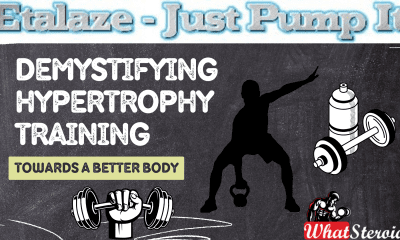
 Bodybuilding2 years ago
Bodybuilding2 years agoDemystifying Hypertrophy Training
-
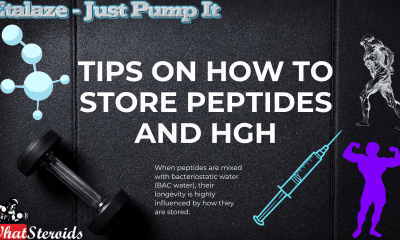
 Steroids11 months ago
Steroids11 months agoTips on How to Store Peptides and HGH
-
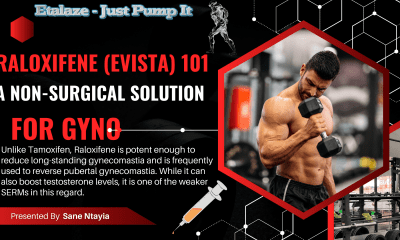
 Steroids9 months ago
Steroids9 months agoRaloxifene (Evista) 101: A Non-Surgical Solution for Gyno
-
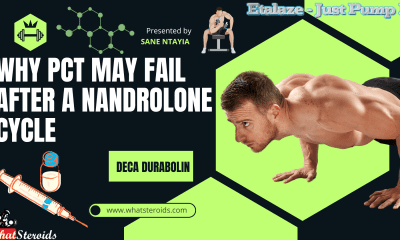
 Steroids10 months ago
Steroids10 months agoWhy Post-Cycle Therapy (PCT) Fails After a Nandrolone Cycle
-

 Beginners1 year ago
Beginners1 year ago14 Morning Run Safety Tips for Bodybuilding and Fitness
-
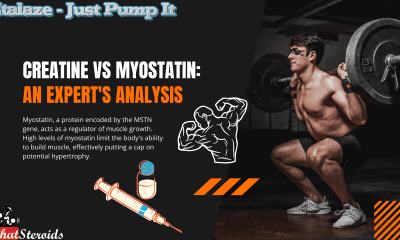
 Steroids9 months ago
Steroids9 months agoCreatine vs Myostatin: An Expert’s Analysis
-
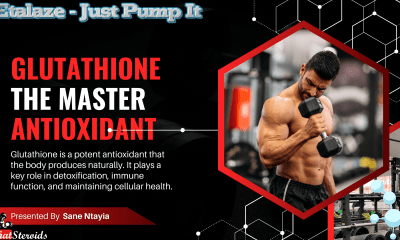
 Steroids1 year ago
Steroids1 year agoGlutathione – The Most Underrated Antioxidant
-

 Bodybuilding2 years ago
Bodybuilding2 years agoList of FDA-Approved Peptides
-

 Product Reviews2 years ago
Product Reviews2 years agoTop Vitamins for Skin Health
-
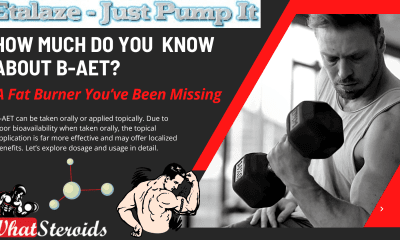
 Anabolic Steroids2 years ago
Anabolic Steroids2 years agoHow Much Do You Know About B-AET? A Fat Burner You’ve Been Missing
-
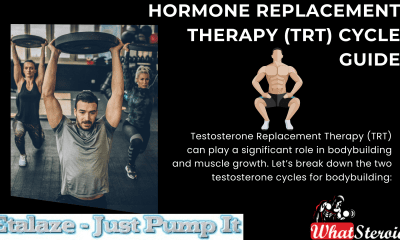
 Bodybuilding1 year ago
Bodybuilding1 year agoHormone Replacement Therapy (TRT) Cycle Guide
-

 Anabolic Steroids2 years ago
Anabolic Steroids2 years agoAnavar Cycle for Men and Women

